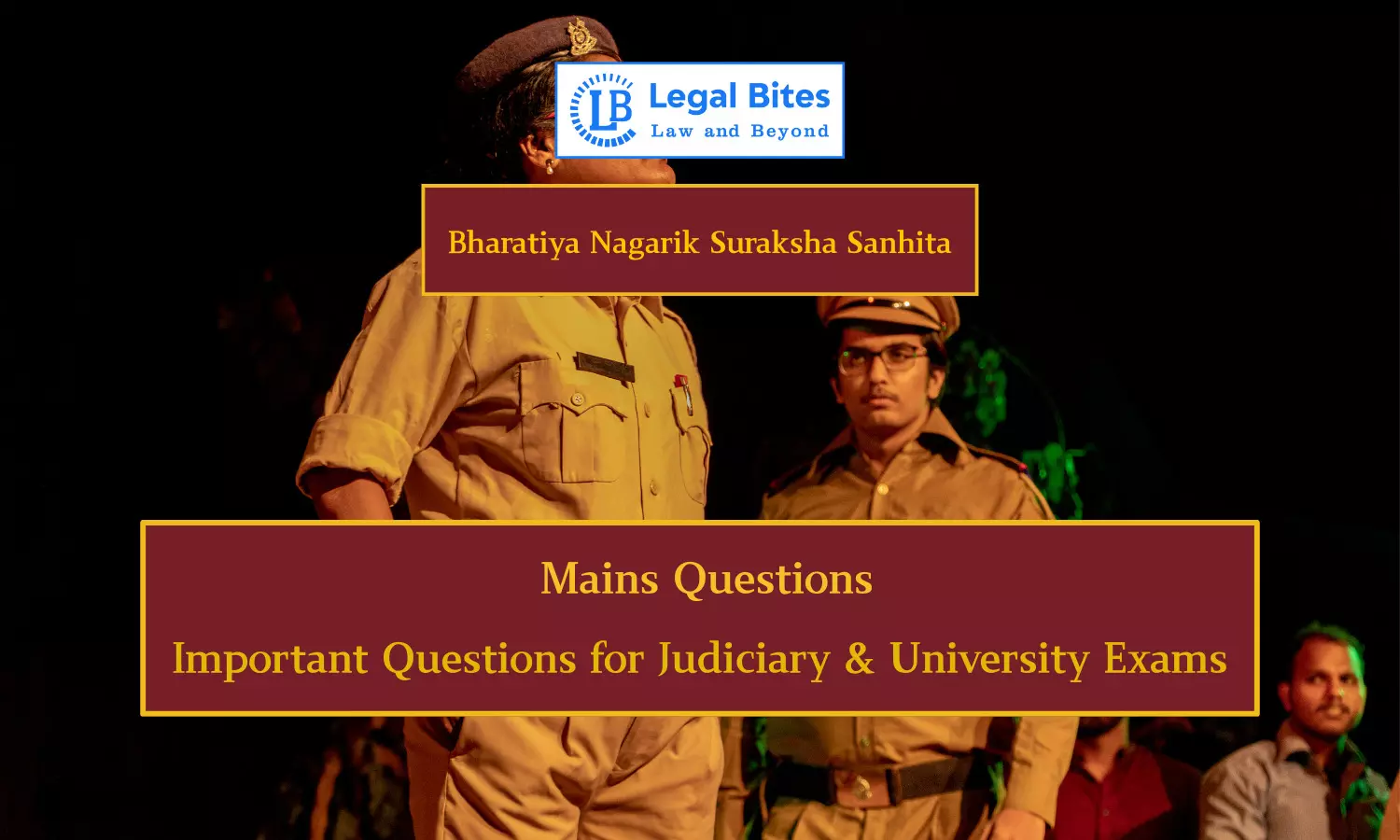Define the terms 'Information' and 'First Information Report' and compare them with the term 'Complaint'.
Find the answer to the mains question only on Legal Bites.

Question: Define the terms 'Information' and 'First Information Report' and compare them with the term 'Complaint'. [OJS 2019]Find the answer to the mains question only on Legal Bites. [Define the terms 'Information' and 'First Information Report' and compare them with the term 'Complaint'.]AnswerSection 173(1) of the Bharatiya Nagarik Suraksha Sanhita, 2023 (BNSS), corresponding to Section 154 of the CrPC, deals with the concept of “information” in relation to cognizable offences....
Question: Define the terms 'Information' and 'First Information Report' and compare them with the term 'Complaint'. [OJS 2019]
Find the answer to the mains question only on Legal Bites. [Define the terms 'Information' and 'First Information Report' and compare them with the term 'Complaint'.]
Answer
Section 173(1) of the Bharatiya Nagarik Suraksha Sanhita, 2023 (BNSS), corresponding to Section 154 of the CrPC, deals with the concept of “information” in relation to cognizable offences. It provides that when such information is given to the officer in charge of a police station, it must be recorded in writing and signed by the informant. This recorded statement constitutes the First Information Report (FIR).
However, a subtle distinction exists between “information” and “FIR”:
-
Information may be general and can include any communication made to the police.
-
An FIR is the first piece of credible information about a cognizable offence that triggers the criminal investigation process and holds corroborative value under Section 160 of the Bharatiya Sakshya Adhiniyam, 2023 (BSA).
Importantly, Section 173(3) BNSS introduces a provision for preliminary inquiry in specific cases before registering an FIR, marking a departure from the CrPC’s earlier approach.
Under Section 173(2) of the BNSS (corresponding to Section 154 of CrPC), an FIR is a formal document prepared by the police upon receiving information regarding a cognizable offence. It initiates the investigation and includes details of the offence, the informant, and the circumstances under which the alleged offence occurred.
The BNSS also incorporates the concept of Zero FIR, which was recommended by the Justice Verma Committee following the Nirbhaya case. Zero FIR allows information to be recorded at any police station, regardless of the place of occurrence. Such information can be given orally or via electronic communication.
In Satvinder Kaur v. State (Govt. of NCT of Delhi) [(1999) 8 SCC 728], the Supreme Court held that a police officer is duty-bound to lodge an FIR if the information discloses a cognizable offence, mirroring the mandate under Section 154(1) CrPC. It is also well settled that there cannot be more than one FIR for the same offence.
The purpose of an FIR is to:
- Record a spontaneous version of the alleged crime;
- Serve as a basis for investigation; and
- Help in preserving evidence before it can be lost or tampered with.
In Lalita Kumari v. Government of U.P. [(2014) 2 SCC 1], the Supreme Court held that:
- Registration of an FIR is mandatory when a cognizable offence is disclosed.
- Preliminary inquiry is not permitted, except in specific categories of cases (e.g., matrimonial disputes, commercial offences, medical negligence, etc.).
On the other hand, a complaint, as defined under Section 2(1)(h) BNSS (corresponding to Section 2(d) CrPC), is:
"An allegation made orally or in writing to a Magistrate, with a view to taking action, that some person has committed an offence."
A police report is not considered a complaint, as it constitutes a separate category.
Key Differences
Authority addressed:
- FIR/information is submitted to the police.
- Complaint is filed before a Magistrate.
Nature of offence:
- FIR is limited to cognizable offences.
- Complaint can be filed for cognizable or non-cognizable offences.
Format
- While a complaint has no prescribed format, an FIR can only be registered in the format prescribed by the law.
Discretion:
- Upon disclosure of a cognizable offence, the police have no discretion—they must register an FIR.
- A Magistrate, upon receiving a complaint, has discretion—they may either take cognizance or dismiss the complaint.
While information may be general, the FIR represents the first credible step in the investigation of a cognizable offence, carrying significant evidentiary value. On the other hand, a complaint is a procedural route addressed to a Magistrate and can cover both cognizable and non-cognizable offences. The key differences lie in the authority approached, the nature of the offence, and the degree of discretion available to the concerned authority. Together, these provisions ensure that the justice system functions efficiently, responsibly, and in accordance with due process.

Mayank Shekhar
Mayank is an alumnus of the prestigious Faculty of Law, Delhi University. Under his leadership, Legal Bites has been researching and developing resources through blogging, educational resources, competitions, and seminars.
